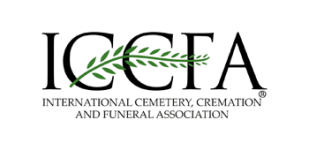Funeral Home and Cremations FAQs
- Providing a social support system for the bereaved.
- Helping the bereaved understand death is final and part of life.
- Integrating the bereaved back into the community.
- Easing the transition to a new life after the death of a loved one.
- Providing a safe haven for embracing and expressing pain.
- Reaffirming one’s relationship with the person who died.
- Providing a time to say good-bye.
- Be an informed consumer and ask questions.
- Choose an independent funeral home and a licensed funeral director.
- Discuss all service and payment options during the funeral arrangements.
- Make sure you receive a copy of the funeral home’s General Price List.
- Be prepared to make decisions and organize details in advance of need.
- Plan a personalized and meaningful ceremony to help you begin healing.
Funeral directors are caregivers and administrators. They make the arrangements for the transportation of the deceased, complete all necessary paperwork, and implement the choices made by the family regarding the funeral and final disposition of the deceased.
Funeral directors are listeners, advisors, and supporters. They have experience assisting the bereaved in coping with death. Funeral directors are trained to answer questions about grief, recognize when a person is having difficulty coping, and recommend sources of professional help. Funeral directors also link survivors with support groups at the funeral home or in the community.
Every family is different, and not everyone wants the same type of funeral. Funeral practices are influenced by religious and cultural traditions, costs, and personal preferences. These factors help determine whether the funeral will be elaborate or simple, public or private, religious or secular, and where it will be held. They also influence whether the body will be present at the funeral, if there will be a viewing or visitation, and, if so, whether the casket will be open or closed and whether the remains will be buried or cremated. Why have a public viewing?
Viewing is part of many cultural and ethnic traditions. Many grief specialists believe that viewing aids the grief process by helping the bereaved recognize the reality of death. Viewing is encouraged for children as long as the process is explained and the activity voluntary.
Embalming sanitizes and preserves the deceased, retards the decomposition process, and enhances the appearance of someone disfigured by traumatic death or illness. Embalming makes it possible to lengthen the time between death and the final disposition, thus allowing family members time to arrange and participate in the type of service most comforting to them.
No. Most states, however, require embalming when death is caused by a reportable contagious disease or when a deceased is to be transported from one state to another by a common carrier, or if final disposition is not to be made within a prescribed number of hours.
As more people are choosing cremation, funeral service professionals are striving to give consumers a true sense of what their many options are for a funeral service. Often funeral directors find that people have a preconception that they have fewer choices for a ceremony when selecting cremation for themselves or a loved one. Therefore, they request direct cremation and deny the surviving friends and family the opportunity to honor them with a memorial service. In actuality, cremation is only part of the commemorative experience. In fact, cremation can actually increase your options when planning a funeral. Cremation gives people the flexibility to search for types of tributes that reflect the life being honored. But, this doesn’t mean that aspects of traditional funeral services have to be discarded. Even with cremation, a meaningful memorial that is personalized to reflect the life of the deceased could include:
- A visitation prior to the service.
- An open or closed casket.
- Special music.
- A ceremony at the funeral chapel, your place of worship, or other special location.
- Participation by friends and family.
Commonly, cremated remains are placed in an urn and committed to an indoor or outdoor mausoleum or columbarium, interred in a family burial plot, or included in a special urn garden.
Cremation also gives families the option to scatter the remains. This can be done in a designated cemetery garden or at a place that was special to the person. Today, cremated remains can even become part of an ocean reef or made into diamonds.
In 2009, the national average cost of an adult, full-service funeral was $6,560. This includes a professional service charge, transfer of deceased, embalming, other preparation, use of viewing facilities, use of facilities for ceremony, hearse, service car or van, and metal casket. This average increases to $7,755 if a vault is included. Cemetery and monument charges are additional. (Source: 2010 NFDA General Price List Survey.)
| (714) 521-1011 | (714) 521-1010 |
|---|---|
| Garden Grove | Buena Park |



